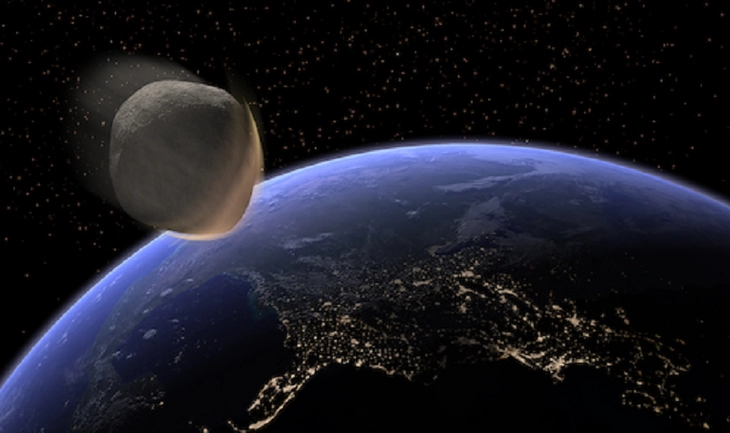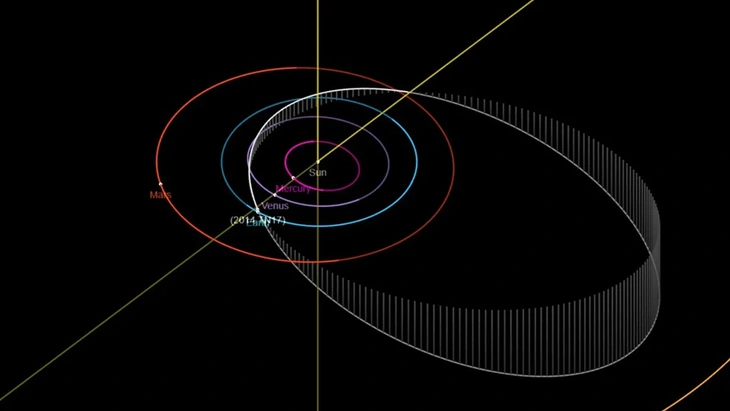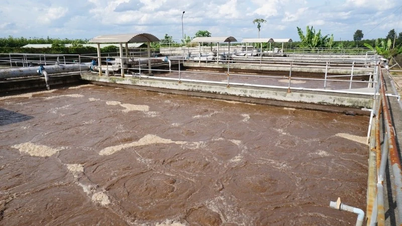
The asteroid 2014 TN17, about the size of a pyramid, will fly close to Earth on March 26th - Photo: CANADATODAY
According to scientists , the asteroid 2014 TN17, which is the size of a pyramid, will fly past Earth at a speed of 77,300 km/h this week as it reaches its closest point to Earth in over 100 years.
However, data suggests that the asteroid is unlikely to collide with our planet now or in the future , according to LiveScience.
Specifically, at around 7:30 AM ET on March 26th, which is approximately 6:30 PM the same day in Vietnam time, asteroid 2014 TN17 will fly past Earth at a distance of 5.1 million kilometers (more than 13 times the distance between the Moon and Earth), according to the Jet Propulsion Laboratory (JPL) of the US National Aeronautics and Space Administration (NASA).
This was the closest approach of this asteroid in nearly 300 years in JPL simulations, which include calculations of all its flybys of Earth from 1906 to 2200.

The asteroid 2014 TN17 (white elliptical orbit) will fly close to Earth (blue orbit) on March 26th - Photo: NASA
Researchers estimate the asteroid 2014 TN17 to be about 165 meters in diameter, slightly wider than the height of the Giza pyramids (Egypt) and large enough to wipe out a city if it collided with Earth.
NASA classified 2014 TN17 as "potentially hazardous" due to its size and occasional close flybys of Earth. However, that doesn't mean it's dangerous.
During its flyby of Earth on March 26th, the asteroid will be too far out of reach of telescopes or stargazing binoculars. However, it will be large enough for researchers to track and observe.
NASA's GSSR radar system in California (USA) has also scheduled to closely monitor this asteroid as it flies past Earth.
Designed specifically to observe near-solar objects as they fly past Earth, GSSR has over the years helped detect the unusual "snowman" shape of an asteroid, identify changes in the orbit of another asteroid, and discover a small moon orbiting a third asteroid.
Approximately 2,500 asteroids have the potential to pose a threat.
According to the International Astronomical Union's Minor Planet Center, there are currently about 2,500 known potentially hazardous asteroids.
No asteroids are predicted to hit Earth in the near future, but some will fly quite close to us.
Source: https://tuoitre.vn/thien-thach-lon-du-xoa-mot-thanh-pho-bay-gan-trai-dat-ngay-26-3-20250325100727457.htm













![[INFOGRAPHIC] nubia Neo 3, a gaming smartphone that lets you climb the ranks without overheating.](https://vphoto.vietnam.vn/thumb/402x226/vietnam/resource/IMAGE/2025/12/14/1765692900281_info-nubia-02-jpg.webp)

























































































Comment (0)